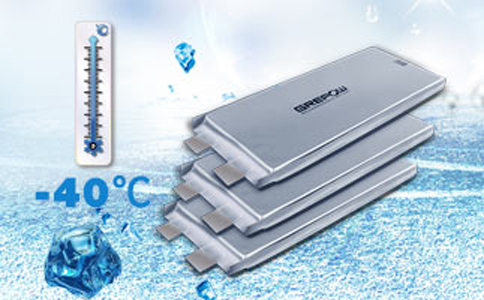Analysis on the method of shortening the formation time of lithium ion battery by Zhongshan lithium battery manufacturer
In the production process of lithium-ion batteries, the formation process of batteries is an important part of battery production. Generally, we need to complete the moistening and formation of lithium-ion batteries in 3-7 days. In order to eliminate the large leakage of lithium-ion batteries, we need to carry out aging for about 2 weeks after the completion of the formation process. This process accounts for a high part of the cost, accounting for about 28% of the production site together. So shortening the time of lithium-ion battery formation will be an effective way to save the cost of battery production, so what should we do?
To shorten the formation time of lithium-ion battery is to improve the cycle function of lithium-ion battery as much as possible without affecting the original function of the battery. The general needs start from two aspects:
1. Moistening of electrolyte
Sufficient contact between electrolyte and active material is the basic requirement for the formation of a uniform and fine SEI film on the surface of lithium-ion battery electrode. Temperature has a positive effect on the activity of chemical substances, so the contact angle between electrolyte and active substances can be effectively reduced when the temperature is increased to 40-60 ℃, which can promote the electrolyte to enter into the micropore inside the electrode and improve the moistening effect of electrolyte. In order to ensure the moistening effect of lithium-ion battery and reduce the corrosion of copper foil in the process of moistening, in addition to planning multi-step moistening process, the battery will be precharged after liquid injection to reduce the potential of negative electrode and reduce the risk of dissolution of negative copper foil.

2. Formation of lithium ion battery
The process of battery formation is actually the process of initial charging of lithium-ion batteries. In order to ensure a uniform and fine SEI film on the surface of negative electrodes, a very small current will be used to recharge the battery, and the rate of film formation will be reduced.
After moistening and forming, in order to remove the batteries with large leakage current, it is generally required to aging the batteries for 1-2 weeks. At the end of the battery formation, the leakage current in the lithium-ion battery is generally 20-50ua / cm2. After several hours of stability, the leakage current will drop to 2-5ua / cm2. After a few weeks, the leakage current in the battery will drop below 1uA / cm2. However, the leakage current of some lithium-ion batteries will continue to be high due to manufacturing defects, electrolyte impurities and other factors. Once entering the combination, the voltage error between the single batteries will be too large, which will affect the function of the battery pack. In order to ensure the consistency of the battery pack, it is necessary to select and remove these batteries.
In order to compact the formation time, firstly charge the lithium-ion battery to 3.9v with a large current (1c), then charge and discharge the lithium-ion battery in the range of 3.9-4.2v with a C / 5 ratio, and finally discharge the battery to 3.0V. Compared with three cycles with a 0.05c ratio, the formation time of the battery only needs 14h and the formation speed is 8.5 times faster. In this way, although the formation time is greatly shortened, the capacity of the battery is decreased. The rapid degree of formation reduces the capacity of the battery by 13%. If we reduce the current of rapid charging in the low voltage range to 0.2C or 0.33c, the specific capacity of the positive electrode of the battery will be reduced by 12mah / g (7%) compared with that of 0.05c.
Some advanced battery skills, such as atomic layer stacking (ALD), make further tightening, moistening and formation time possible. Research shows that adding atomic layer stacking layer on the surface of positive and negative materials can further compress the formation time to within 10 hours, or even directly select atomic layer stacking technology to directly generate SEI film on the positive and negative marks, replacing the traditional meaning SEI film, thus further reducing the time needed for formation.
The results show that the large current is selected in the high potential stage of the negative electrode, and the small current is selected in the low potential stage for formation, which can effectively shrink the formation time. This method can partially form SEI membrane in the formation stage, and finally complete the construction of SEI membrane in the use process of lithium-ion battery, which has no obvious impact on the circulation function of the final lithium-ion battery.
Zhongshan lithium battery manufacturer http://tgqsng.cn/
-
04-08
Analysis of Sun Yat Sen solar energy lithium battery
Solar street lamp is composed of solar panel, solar controller, battery group, light source, lamp pole and lamp shell. Solar battery is divided into lithium battery and gel battery. Lithium battery
-
04-08
Sun Yat Sen lithium battery manufacturer told us which is better, from the advantages and disadvantages of graphene battery or lithium battery?
Graphene battery was popular in the battery industry in the past few years, but it finally fell silent. The main stream battery in the market is still lithium battery. Which is better, graphene batt
-
04-08
Analysis on the method of shortening the formation time of lithium ion battery by Zhongshan lithium battery manufacturer
In the production process of lithium-ion batteries, the formation process of batteries is an important part of battery production. Generally, we need to complete the moistening and formation of lith